DKT Test ( Intersection) #2
At the roundabout, you want to go straight ahead. Which of the following statements is correct?
Explanation:
You can go straight forward from either lane if the lanes are labeled that way, as long as you stay in the same lane as when you entered the roundabout. If you're heading straight ahead, don't indicate right.
A left turn is what you want to do. Your left-hand indicator must be used.
Explanation:
Even if there are arrows on the road or no other cars present, you must always use your indicator when performing a maneuver.
When these lights flash, it signifies something is.
Explanation:
Pedestrians must wait for the next green signal before crossing the street.
At the roundabout, you want to make a left. Which lane are you allowed to use?
Explanation:
To turn left, always utilize the left lane.
At an intersection, there are no traffic signs or signals. If you want to go past the intersection, you must give way to the following vehicles:
Explanation:
If you want to go straight through an unmarked crossing, you must always give way to vehicles on your right.
When traveling on a laned highway, which lanes must be used to make right-hand turns?
Explanation:
Only the right-hand lane, or any other lane with a right-pointing arrow, may be used to make a right turn.
The motorcycle rider wishes to proceed straight through the roundabout. The cyclist should keep an eye out for the marked vehicle because it:
Explanation:
The car will travel through the route of the motorcycle as it exits the roundabout.
Advertisement
You come to a stop sign at an intersection. There is no stop line drawn on the ground. Where should you come to a halt?
Explanation:
First, come to a complete halt as close to the intersection as practicable.
At a roundabout, you can enter from either the left or right lane to drive straight forward. As you move around, make sure to:
Explanation:
You can go straight forward from either lane if the lanes are labeled that way, as long as you stay in the same lane as when you entered the roundabout. Once you've passed the exit before the one you're taking, signal left.
To return to the route from which you entered this roundabout, you must:
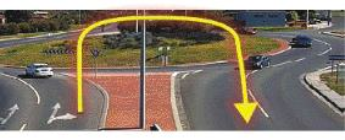
Explanation:
All the way around, stay in the right lane, then exit in the right lane (if applicable).
While driving toward the intersection in the picture, you should:
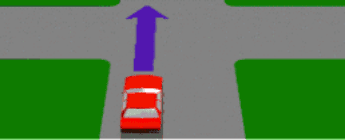
Explanation:
You should be prepared to stop if necessary because traffic may appear.
Car O is stopped at a stop sign.
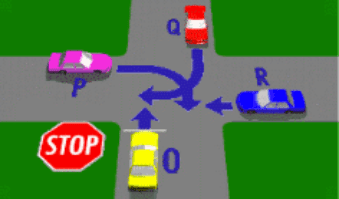
Explanation:
Vehicle O must yield to all other vehicles.
In the car marked A, you approach a stop sign-marked intersection with the intention of turning right. Along with having a stop sign, the car with the letter B facing you is signaling a left turn. Who will go first?
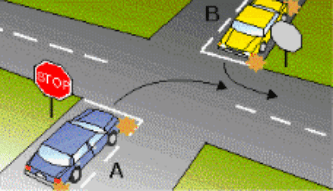
Explanation:
When two vehicles are in front of each other, the one turning left has the right of way.
The opposite side of this intersection's traffic has come to a complete stop. You want to cross the intersection in the car in the illustration. The traffic lights are green. What should you do?

Explanation:
Make sure there is space for you to pass across the crossing without stopping and blocking it.
Advertisement
This roundabout is where you should turn left. What lane do you have to use?
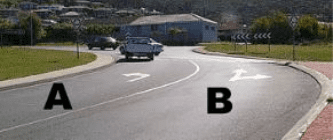
Explanation:
To turn left, always stay in the left lane.
Which car is in the best position to turn left into the street marked 'X' if both vehicles P and O in the diagram are going right?
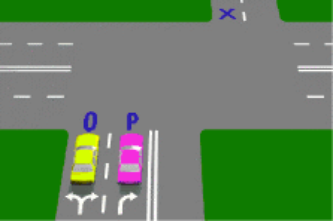
Explanation:
The best position is occupied by Vehicle O.
Which car should yield at the T-intersection in the diagram?

Explanation:
Vehicle R has to yield.
In the diagram, you are driving the car. You have to stop:
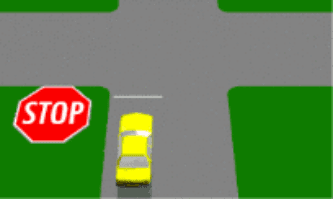
Explanation:
Even if you don't believe there is any risk, you must always stop at a stop sign.
At the intersection depicted, you must yield to the following when making a right turn:
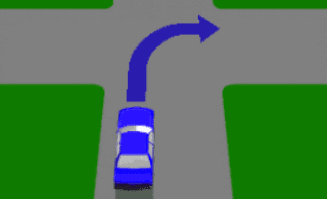
Explanation:
When turning at an unmarked crossroads, you must yield to oncoming traffic on your right and through traffic.
If you come to an intersection controlled by a traffic controller:
Explanation:
Signals given by traffic controllers take precedence over those of intersectional signs and lights.